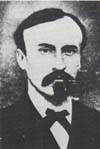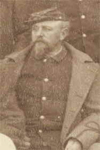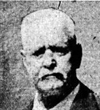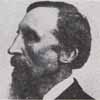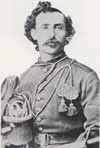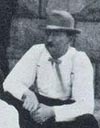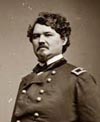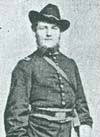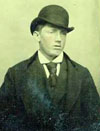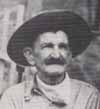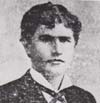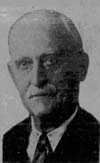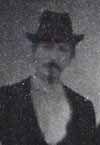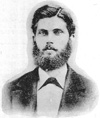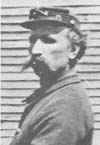William E. Robinson was born on April 12, 1842, in County Down, Ireland. He was a Private in Company M who participated in the valley and hilltop fights during the Battle of the Little Bighorn.
Andrew Knecht was born on April 12, 1853, in Cincinnati, Ohio. He was a Private in Company F who was killed with Custer’s Column.
Henry M. Brinkerhoff was born in Gettysburg, Pennsylvania, on April 12, 1854. He was a Private in Company G who participated in the valley and hilltop fights.
Daniel Kanipe (left) married Missouri Ann Wycoff Bobo on April 12, 1877. She was the widow of Lemuel Edwin Bobo (right) who was killed in the battle. Kanipe was a Sergeant in Company C who was with Custer’s Column and in the hilltop fight.
Edwin Butler Wight married Alia E. Roberts on April 12, 1906. He was a Private in Company B who was not present at the battle due to detached service at Powder River, Montana.
John McShane died at Fort Abraham Lincoln, Dakota Territory, on April 13, 1877. He was originally buried in the Post Cemetery there and later reinterred in the Custer National Cemetery in Montana. He was a Private in Company I who was with the pack train and participated in the hilltop fight.
Joseph H. Green died on April 13, 1922, in Washington, D.C., and was buried in the Soldiers’ Home Cemetery there. He was a Private in Company D who participated in the hilltop fight.
Patrick Carey was born on April 14, 1828, in Tipperary, Ireland. He was a Sergeant in Company M who participated in the valley and hilltop fights.
John Dolan (left), who was also known as Thomas Brown, was born in Dublin, Ireland, on April 14, 1843. He was a Private in Company M who was not present at the battle due to detached service on the steamer Far West.
John W. Sweeney died in Kentucky on April 14, 1884. He was a Private in Company F who participated in the hilltop fight.
Daniel Kanipe ( see photo above) was born on April 15, 1853, in Marion, North Carolina. He was a Sergeant in Company C who was with Custer’s Column and in the hilltop fight.
Robert Rowland died near the Cannonball River, North Dakota, around April 15, 1879, of an apparently self-inflicted gunshot wound in his head and was buried in the Keokuk National Cemetery in Keokuk, Lee County, Iowa. He was a Private in Company G who was not present at the battle due to detached service at the Powder River Depot.
Walter Scott Sterland was born on April 16, 1851, in Chesterfield, Derbyshire, England. He was a Private in Company M who was not present at the battle because he was on detached service at Yellowstone Depot.
Roman Rutten died on April 16, 1925, in Leavenworth, Kansas, and was buried in the Fort Leavenworth National Cemetery. He was a Private in Company M who participated in the valley and hilltop fights. He was wounded on Reno Hill.
Charles Stillman Ilsley (left) died on April 17, 1899, in Salt Lake City, Utah, and was buried in Woodlawn Cemetery in Everett, Middlesex County, Massachusetts. He was a Captain in Company E who was not present at the battle due to detached service at Fort Leavenworth, Kansas.
August Bockerman died on April 17, 1904, in St. Joseph, Missouri. He was a Private in Company A who was not present at the battle because he was on detached service with the band at Powder River.
William G. Hardy (left) died in San Francisco, California, on April 17, 1919, and was buried in the National Cemetery there, the Presidio. He was a trumpeter in Company A who participated in the valley and hilltop fights.
Frank W. Sniffin died at Fort Oglethorpe, Georgia, on April 17, 1931, and was buried in the Chattanooga National Cemetery in Tennessee. He was a Private in Company M who participated in the valley and hilltop fights.

